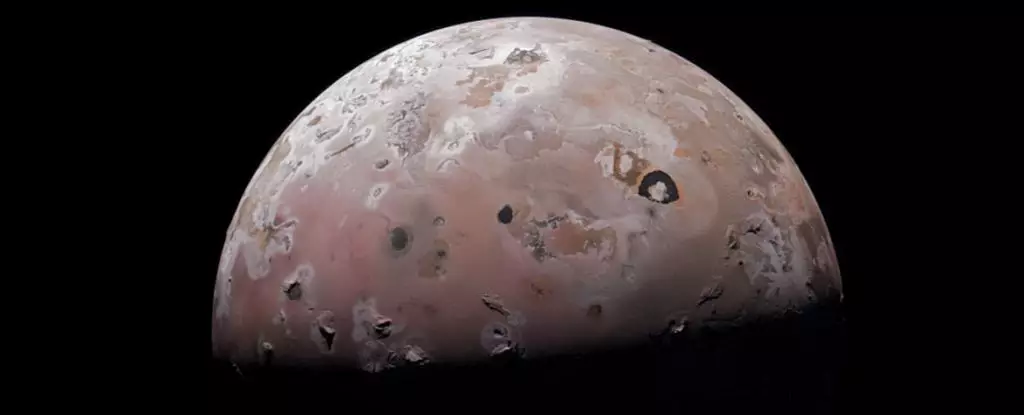Jupiter’s moon, Io, has long captivated scientists and space enthusiasts with its volatile and tumultuous nature. Surpassing all other celestial bodies in the Solar System, Io is dubbed the most volcanic object to date. In a recent development, the Juno probe conducted its closest flyby of Io, capturing stunning images that have offered unprecedented insights into the moon’s sulfurous and fiery landscape. This article delves into the new details unveiled by Juno’s flyby and explores the ongoing research aimed at unraveling the enigmatic mysteries of this alien world.
On December 30, 2023, the Juno probe accomplished a groundbreaking feat by flying closer to Io than any other probe in recent decades. Soaring within a mere 1,500 kilometers (930 miles) of the moon’s surface, Juno seized the opportunity to snap awe-inspiring images that showcased the moon’s distinctive volcanic activity. A mottled surface glowing with sickly, sulfurous hues painted a vivid picture of Io’s ongoing volcanic eruptions. The primary objective of this mission is to gain a deeper understanding of the peculiarities of this celestial body.
Despite its modest size, Io is a world brimming with intense volcanic activity. Unlike Earth’s comparatively tranquil Moon, Io’s gravitational dynamics with Jupiter and other Galilean moons generate enormous heat and stress, resulting in a chaotic volcanic landscape. Approximately 400 active volcanoes dot its surface, with around 150 erupting at any given time. A vibrant display of molten lava flows and the venting of volcanic gases contribute to the constant transformation of Io.
Scientists and astronomers utilize the data collected by Juno to unravel the mysteries surrounding Io’s volcanic phenomena and its role within Jupiter’s complex system. By combining observations from multiple flybys, the Juno science team aims to determine the frequency, intensity, and characteristics of Io’s volcanoes, as well as the fluctuations in lava flow patterns. Additionally, they seek to understand how Io’s volcanic activity relates to the flow of charged particles in Jupiter’s magnetosphere.
Juno’s exploration of Io goes beyond studying its volcanism. Scientists endeavor to investigate the source of its massive volcanic activity, including the existence of a potential magma ocean beneath its crust. Furthermore, the relentless tidal forces exerted by Jupiter on Io continuously shape and torment the moon. Understanding these processes sheds light on the complex interplay between Jupiter, its moons, and their ongoing evolution.
Juno’s mission extension grants researchers additional opportunities to gather critical data about Io. With instruments that show signs of degradation after three years in Jovian orbit, the spacecraft is working diligently to make the most of its remaining operational period until September 2025, or until its eventual breakdown. During this time, Juno will continue to explore Io and its fellow Galilean moons while thoroughly observing Jupiter itself.
As we eagerly await the upcoming close flyby on February 3, 2024, the scientific community and space enthusiasts anticipate the stunning new images Juno will capture. These visuals will be instrumental in enhancing our understanding of Io’s volcanic landscape, paving the way for future missions and further exploration of the captivating mysteries hidden within Jupiter’s celestial neighborhood. In the meantime, NASA’s Juno mission website offers a glimpse into the most recent images documenting Io’s volcanic spectacle.
Juno’s remarkable flyby of Io has provided us with an extraordinary window into the tumultuous world of Jupiter’s volcanic moon. Through the meticulous analysis of the data collected and the continued exploration of Io, scientists are poised to uncover its secrets and unravel the complexities of our vast and magnificent universe.


Leave a Reply